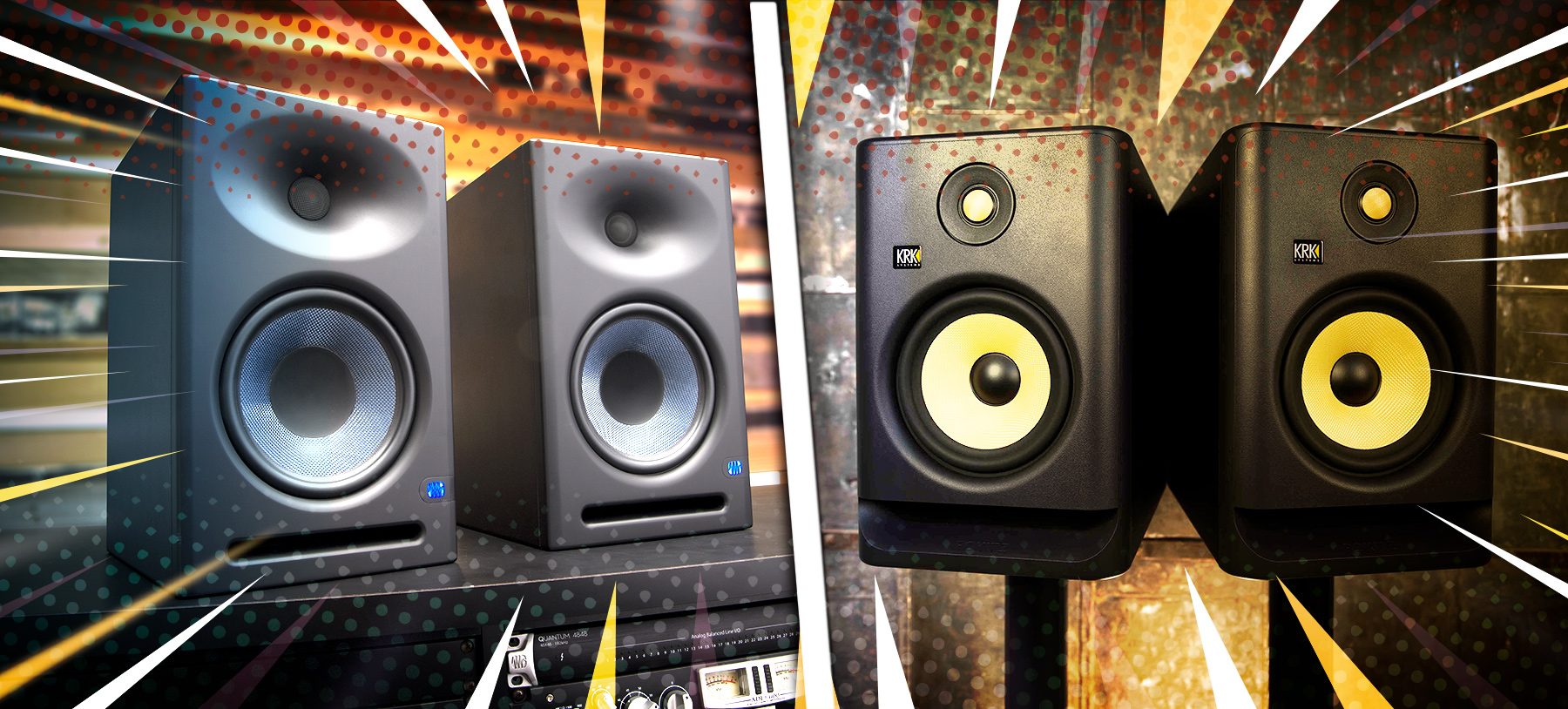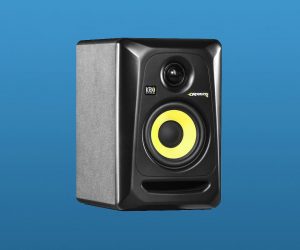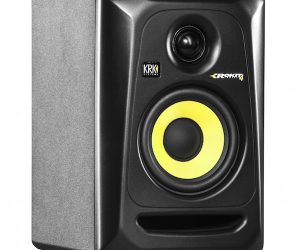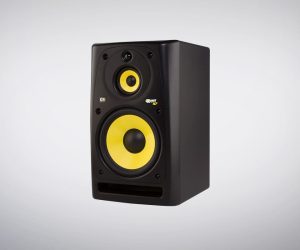
KRK Rokit v Presonus Eris
Studio monitor technology is continually getting more sophisticated, while prices are continually dropping. We look at the current state of the market and feature two low-cost monitors that offer a lot of bang for your buck.
NEED TO KNOW
Many years ago I had a grand to blow on a pair of nearfield monitors. I’d come to the realisation that my mixes weren’t translating well; I simply couldn’t nail it. The out-the-back-of-a-white-van home stereo speakers I’d repurposed were utter garbage. Mixing 101, I know, but I was at the beginning of my mixing journey. It was time to sink some money into monitoring rather than sequencers, synths and MIDI cables.
Back then the nearfield monitoring options at the sub-$1000 mark were thin on the ground. After traipsing around the usual Sydney instrument stores auditioning various contenders, scrutinising pages of specifications and absorbing everything remarked upon in audio mags, the choice came down to a measly three candidates… and they were all passive so I needed to buy an amplifier as well. The candidates were a two-way pair of Tannoys, the venerable Yamaha NS-10s, or JBL’s early foray into the home-studio market: the 4206. All three were from respectable manufacturers. Surely I couldn’t go too far wrong?
Down the track I learned I’d completely made the wrong decision, jumping on the JBLs when I should have gone with the NS-10s. At the time the NS-10 sound reminded me of poor old Nipper, the His Master’s Voice pooch, sitting in front of the gramophone cursing the excruciatingly uninspiring reproduction of his favourite 78s. In comparison, the JBLs projected a way fruitier bottom-end, and I was producing electronica. Please sir, take my money.
The JBLs skewed my mixes in yet another wrong direction, and I eventually moved on. In their defence they did instigate my phobia of metal dome tweeters — they tore my hearing to shreds, making long sessions feel even longer. I still use them for domestic background duties, all the while surreptitiously reminding me of the NS-10s I almost owned.
WHAT’S NEW?
These days the landscape is quite different; it’s awash with affordable nearfield monitors. There’s a minefield of nearfields, if you will, from Adam Audio, Behringer, Dynaudio, EVE, Genelec, IK Multimedia, JBL, KRK, Mackie, PreSonus, Tannoy, Yamaha, some crew called Monkey Banana, and others kicking around, with many scraping in at less than $500 a pair. Unlike my choices from years ago, they’re all powered. Winning.
So what’s brought all this about? The primary factors are advances in Class-D amplification and switch mode power supplies. Class-D amps are extremely efficient and run relatively cool, whereas linear design amps are less efficient and run hotter because they dissipate the wasted energy as heat. There’s also an advantage using switch mode power supplies as the unit can be powered via multiple international AC standards, which undoubtedly aids manufacturing and shipping costs. The upshot is an amp that is light and comparatively small – there’s no need for heavy heatsinks, so the amp can be housed in less space than an analogue design. Combine these factors with advanced front baffle and waveguide designs, add some clever DSP, and the results are both inexpensive and far more sophisticated than 25 years ago.
So, marvel of marvels, I have two pairs of inexpensive monitors to compare. The first from KRK, an established monitor manufacturer, and the second from Presonus, a relative newcomer to the monitor market.
NEED TO KNOW
KRK ROKIT RP7 G4
First up we’ll look at KRK’s Rokit RP7 G4. The G4 series is the fourth generation of KRK’s Rokit lineage and is a complete redesign utilising trickled-down technology from the company’s V Series. Pertinent is the use of a Kevlar tweeter rather than a soft-dome driver as found in the earlier G3 series. Also unlike the G3 series, the G4 series uses class-D amplification and DSP equalisation. This is really quite neat. KRK has integrated an LCD into the rear of the G4s to visualise settings and simplify setup, with adjustment made via a single stepped potentiometer that also acts as a push-button switch to cycle through parameters. This keeps the rear panel uncluttered, with the remaining features being a combo TRS/XLR input jack and the power switch.
When it comes to massaging that on-board DSP EQ, KRK provides a free iOS and Android app called ‘KRK Audio Tools’ which provides a spectrum analyser, level meter and phase checker. It also includes an excellent tool for adjusting the alignment of your monitors; sit your phone on top of a monitor, select whether you’re altering the alignment of the left or right monitor, then align it until the display reads 30°. Genius! More important is the EQ suggestion feature. This plays pink noise while you adjust the positioning of your phone at ear-height at your listening position. After 20 seconds or so the app will suggest the EQ preset options to select from the rear panel of the monitors. Super genius! I’m sceptical of the accuracy, but it’s an excellent toy. It’s a freebie so grab it whether you use KRK G4 monitors or otherwise; at the least you can align your monitor angles symmetrically.
This is clever tech for monitors at this price point. For under $800 you can get a pair of Rokit RP7 G4s with a seven-inch low-end driver. For a couple of hundred less you could opt for the cheaper Rokit RP5 G4 with a five-inch low-end driver, or, if you’ve got the room, stump up for the eight-inch driver version (Rokit RP8 G4) at still less than a grand.
Combine these factors with advanced front baffle and waveguide designs, add some clever DSP, and the results are both inexpensive and far more sophisticated than 25 years ago.
PRESONUS ERIS E8 XT
Looking at the monitors they have on offer, I get the impression that Presonus are trying various monitor designs until they get their head around what sticks. With forays into single-point dual-concentric drivers (Sceptre series), through to ribbon tweeters (R series) and D’Appolito designs (Eris E44, E66), the company isn’t afraid to discover what it does best. There’s nothing wrong with that, and the results aren’t to be sniffed at. Following the company’s previous Eris E8, the re-imagined Eris E8 XTs sitting on my stands retain the ‘woven composite’ low-end driver of the previous E8 but include the addition of a waveguide surrounding the 1.25-inch silk-dome tweeter. Presonus say the waveguide widens the sweet-spot, which it does.
They’re a solidly built cabinet with a ‘no bells and whistles’ approach to design. Instead of class-D amplification, Presonus has stuck to an AB amplifier design, although they use class-D amplification in their more expensive monitor offerings. Like the KRK Rokits reviewed above, and pretty much all nearfields hitting the market these days, porting ejects from the front baffle.
Inputs are provided for anything line-level: XLR, TRS and RCA. Above these input connectors are three continuously variable knobs with centre-detents. One adjusts gain, while the remaining two allow up to ±6dB adjustment of mids (1kHz) and high frequencies (10kHz). There are also ‘Acoustic Space’ settings (flat, -2dB or -4dB at 800Hz) to compensate for placement close to walls or corners, and a high-pass filter switch with three options: off, 80Hz or 100Hz. With continuously variable pots for the mid and high EQ adjustments, getting them aligned precisely in stereo will take a lot of measurement and effort. In all honesty, I’d be leaving the mid and high pots set flat, and maybe instigating the room setting switches if things weren’t translating so well. With all the adjustments set to flat I wasn’t disappointed by the Eris E8 XTs. Imaging was perfectly acceptable and midrange detail was forward and amply detailed. If you hustled around, I reckon you’d get a pair for $800.
CONCLUSION
The unavoidable conclusion here is that you get a lot of bang for your buck when it comes to monitoring these days, even at the cheaper end of the market. But regardless of how far the technology has come (and it’s come a very long way), there’s no substitute for auditioning monitors in your own space. You should still do your homework. Read the reviews and peruse the forums, and seek out what will suit your requirements. Don’t use eight-inch drivers if you’re working in a 3.6sqm bedroom because you’ll just end up shaking the house about and annoying the locals. Most importantly, look out for the balderdash and gibberish. As with both the monitors mentioned here, there are features that may not add up to what the manufacturer claims, and/or may be inconsequential to you. Only your room, your ears, and how the mix translates will tell you the truth.

























RESPONSES